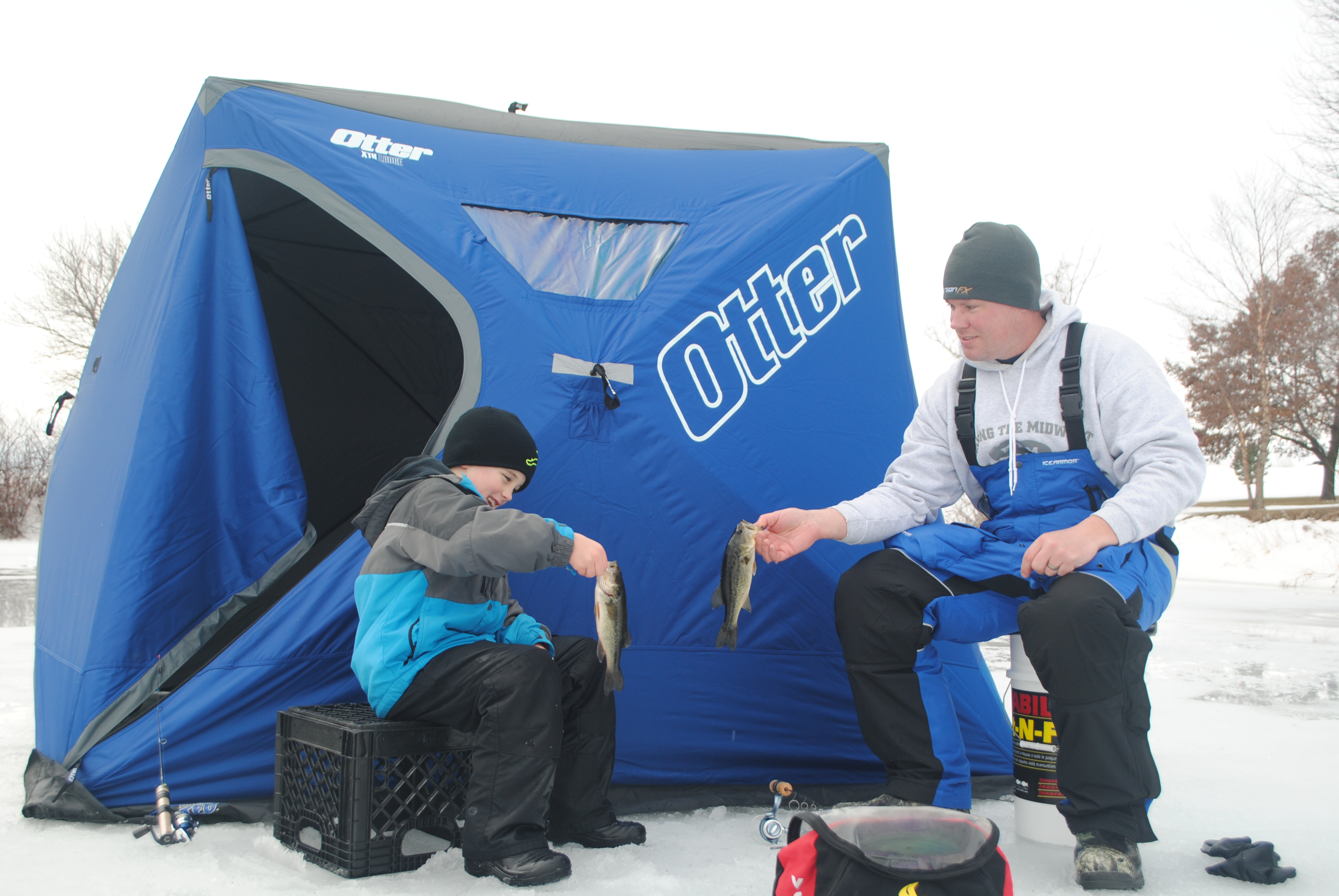
We’re on the back side of winter, and that means a couple of things. We’ll probably get another winter storm or two, and we’re also entering a period of outstanding ice-fishing action. The end of the winter ice-fishing can be productive and enjoyable for a couple of reasons. For one thing, the days are longer. That means more time to spend on the ice.
For another thing, the weather gets warmer, and can also be more stable. That means the fish will be in a biting mood more of the time, and fish that are in a biting mood will be easier to catch.
Small ponds are abundant across much of the ice-fishing country. Recently I went fishing with a dad and his young son. We went to a pond on a warm day when the weather had been stable. The largemouth bass was our quarry, although many ponds also have crappies and bluegills and the like. Ponds like these are perfect for introducing someone to ice-fishing. Fish can usually be found quickly in the smaller waters, they’re often protected from the wind, and they usually don’t get much fishing pressure.
The first task is to locate a pond and get permission to fish. Any information the pond owner can provide can be helpful. Some ponds have fish, some don’t. If the owner indicates fish have never been stocked, continue your search for a pond that has fish.
On smaller ponds, just pop a few holes and look around with your depthfinder. The depthfinder is an invaluable tool any time you’re on the ice. On our recent trip, the pond had lots of slimy vegetation on the bottom. If we let our bait hit the bottom, it picked up the slime. We had to reel in to remove it. By watching our bait on the depth finder, we were able to stop the bait above the bottom.
The bass we caught on this day were running high. We had to keep our baits above them, and the depthfinder enabled us to do this easily. I shared my depthfinder with my young angling friend and he quickly picked up on how to use it. Seeing his bait, then seeing a fish come up to it and eat it added to the excitement. Young people are into video games, and this was kind of like a video game except he was rewarded with a bass every now and then.
Sixteenth-ounce Buck-Shot Rattle Spoons tipped with an Impulse Mini Smelt were the hot set-up. Color didn’t matter: These were hungry fish that just wanted something to eat. If we put the bait down there, they would eat it. We shook the rod tip pretty aggressively to get their attention, but once they came in, we held the bait as motionless as possible. Sometimes though, we had to slowly lift it to get them to bite.
When you take a youngster ice-fishing, a couple of things are important. First, let them entertain themselves if they want to. Don’t force them to fish if they want to take a break and slide on the ice or explore or whatever.
Second, make sure they have dressed appropriately, and when they get cold, go home. The first couple of ice-fishing excursions should be fairly short.
On our couple-of-hour ice trip, we didn’t catch any big ones, but we caught quite a few. The sign of success was when the young angler asked “When can we go again”.
The next month or two will provide good opportunities to spend some time on a pond pulling fish through the ice. I’m sure that if you give it a shot, you’ll enjoy it.
To see all the most recent episodes of Fishing the Midwest television, new fishing-related video tips, and fishing articles from the past, visit fishingthemidwest.com If you do Facebook, check us out for a variety of fishing-related things.
PHOTO CAPTION—A dad and son compare their catch through the ice of a small Midwest pond.
Fishing the Midwest
By Bob Jensen

